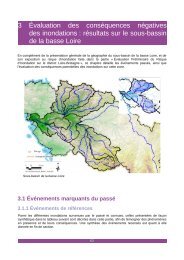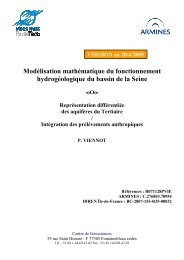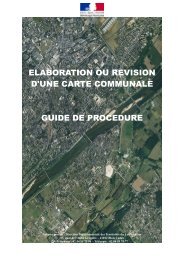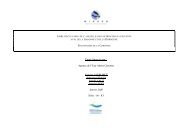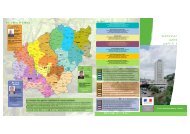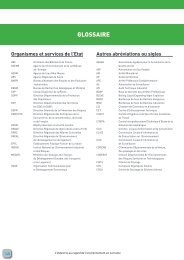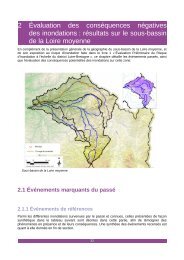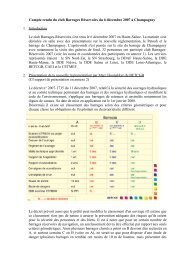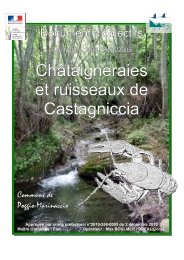Risques littoraux majeurs - Webissimo
Risques littoraux majeurs - Webissimo
Risques littoraux majeurs - Webissimo
You also want an ePaper? Increase the reach of your titles
YUMPU automatically turns print PDFs into web optimized ePapers that Google loves.
Figure 5: Free surface elevation (air/water interface) for 5 slide simulation cases: (1) μ s = 5000 Pa.s, t = 3.2s; (2) μ s = 500 Pa.s, t = 3.3 s; (3) μ s = 100 Pa.s, t = 3.3 s; (4) μ s = 10 Pa.s, t = 3.7 s; (5) μ s = 1 Pa.s, t = 3.5 s.V CONCLUSIONSWe presented simulations of surface wave generation by subaerial slides of idealized geometry, using amulti-fluid NS model, with a VOF free surface tracking algorithm. The comparison of simulations withexperimental results for the generation of a solitary wave by a falling block [16] confirms that our modelaccurately represents both slide/fluid coupling and free surface deformation.The influence of slide deformation on wave generation is studied by performing simulations for variousslide viscosity, the largest one corresponding to a nearly rigid slide. We show that the deforming slide shapestrongly influences both slide motion and wave generation. In cases with large slide deformation (thickening)during motion, surface wave breaking may even occur at some late stage of motion. Such results indicate thatslide rheology should be included in numerical simulations of landslide tsunamis, in order to improve theprediction of wave characteristics.An interesting preliminary observation in terms of tsunami hazard assessment is, in our simulations, a rigidslide represents the worst case scenario, yielding the largest offshore-moving tsunami height H. This had alsobeen suggested by Grilli and Watts [9] based on potential flow simulations and using arbitrary slidedeformation. Since idealized slide shape and incline geometries were used in the simulations, however, thisconclusion may not be general. The present model being general, other slide geometries could beinvestigated in future work.VI ACKNOWLEDGEMENTSThis work was supported in part by a grant of the “Tsunami Risk And Strategies For the European Region”program, funded by the European Commission, under contract n° 037058.VII REFERENCES[1] Watts, P., Grilli, S.T., Tappin & Fryer, G.J. (2005). Tsunami generation by submarine mass failure,Part II: Predictive Equations and case studies, J. Waterway Port Coastal and Ocean Engineering, 131(6),298-310.[2] Ward, S. N. & Day, S. (2001), Cumbre Vieja Volcano - Potential collapse and tsunami at La Palma,Canary Islands, Geophys. Res. Lett., 28, 397-400.



